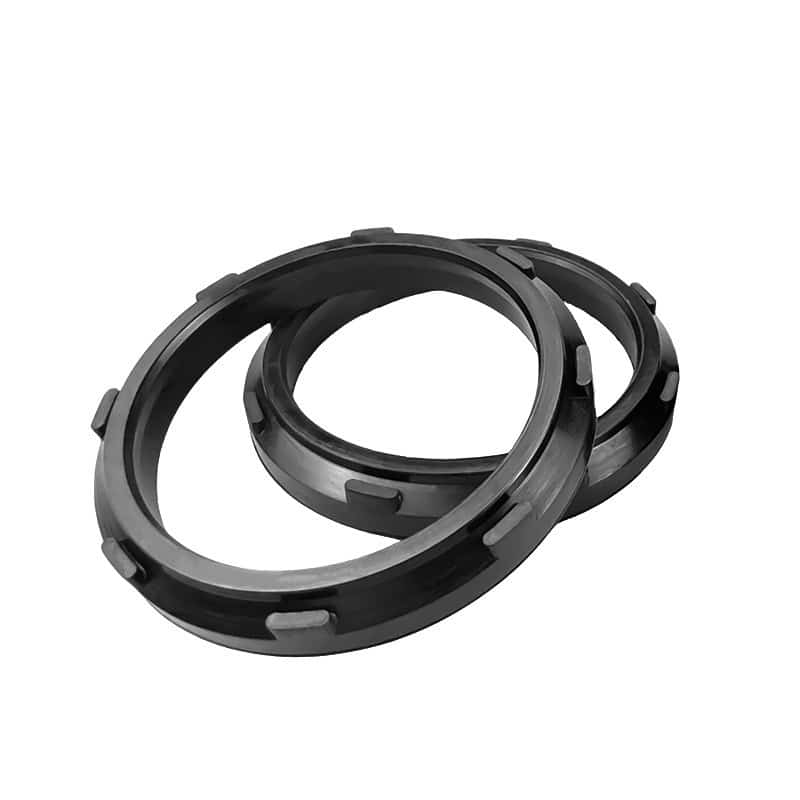Pneumatic cylinders slamming at the end of stroke don’t just sound bad—they signal wear and system damage. I’ve seen countless cylinders fail early just because one small feature was missing: a properly fitted buffer seal or cushion ring.
If you're tired of noisy operation and premature wear, this guide explains how these underrated components reduce shock, absorb impact, and extend the life of your pneumatic system.

What is the role of a buffer seal and cushion ring in a pneumatic cylinder?
Every cylinder stroke generates kinetic energy. If not absorbed, this force causes mechanical stress.
Buffer seals absorb that energy, while cushion rings regulate airflow to reduce piston speed at the end of stroke. Together, they prevent rod bending, cap cracks, and seal blowouts.
| Component | Function | Placement |
|---|---|---|
| Buffer Seal | Absorbs end-stroke mechanical shock | Inside cylinder bore |
| Cushion Ring | Restricts exhaust airflow for deceleration | On piston head or end cap |
To view product specs and sizes, check our buffer seals and cushion rings inventory.
Why is pneumatic cushioning essential for cylinder health?
Without proper cushioning, cylinders slam into the end cap, leading to metal-on-metal impact. Over time, this leads to damage that’s expensive to repair—and dangerous under pressure.
Buffering protects critical components such as:
- Rods (from bending)
- End caps (from cracking)
- Seals (from extrusion or cuts)
- Valves (from pressure shock)
Cushioning not only prevents failure, it improves speed control, reduces noise, and increases overall system efficiency.
Need full protection? Pair cushioning components with complete pneumatic cylinder seal kits.
What are the best materials for buffer seals?
Material affects elasticity, shock resistance, and operating temperature.
| Material | Benefits | Ideal Use Case |
|---|---|---|
| TPU | High wear resistance, flexible | High-speed automation |
| NBR | Oil-resistant, cost-effective | General-purpose cylinders |
| Rubber blends | Soft compression, low-noise damping | Noise-sensitive environments |
High-load applications may also benefit from reinforced seal geometries or metal-backed profiles.
For chemical resistance, check out our material guide for buffer applications.
When should you replace cushion rings or buffer seals?
Over time, these components compress, harden, or crack—especially in high-frequency cycles.
Replace when you notice:
- Louder cylinder noise at stroke end
- Vibration or rebound
- Slower cylinder retraction
- Cracks, flattening, or visible deformation
During replacement, also inspect and upgrade dust wiper seals and piston seals for complete refresh.
Can you retrofit buffer seals into existing pneumatic cylinders?
Yes—many modern buffer and cushion ring designs are adaptable.
If your cylinder doesn’t include a factory buffer system, check for:
- Available groove space
- Piston or end cap clearance
- Material compatibility
Our engineers can help you select custom-sized pneumatic sealing solutions for retrofitting without redesign.
What applications require cushion rings the most?
Systems with rapid movement or heavy loads benefit the most from buffer support. These include:
- Packaging and pick-and-place lines
- Robotic arms
- Stamping machines
- High-frequency pneumatic presses
In these setups, installing a cushion ring or buffer seal can reduce breakdowns by up to 40% based on field case studies.
If you're unsure how to match your configuration, read our full pneumatic seal selection guide.
Conclusion
Buffer seals and cushion rings don’t just prevent impact—they define how smoothly and safely your pneumatic cylinder operates. A small investment now saves expensive downtime later.
Upgrade your system with the right buffer solution
Ready to prevent impact damage and reduce noise?
📧 Email: [email protected]
📱 WhatsApp: +86 17622979498
Explore our high-performance buffer and cushion seal solutions and request OEM kits.
Related topic
Pneumatic Cylinder Seal Kits
Dust Wiper Seals for Pneumatic Cylinders
Custom Seal Solutions


